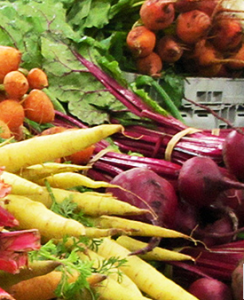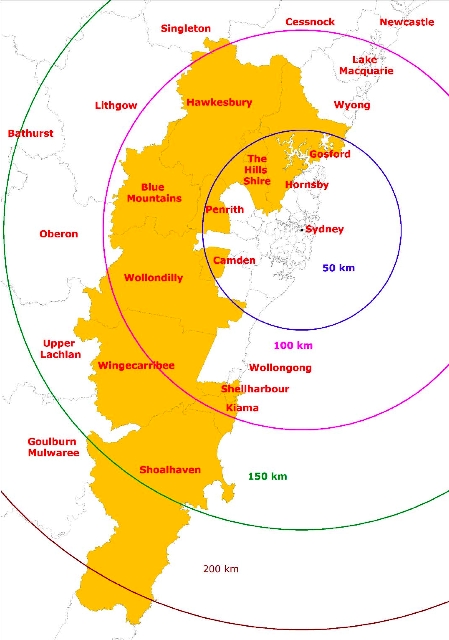Why grow fresh food in the Sydney basin?
 Close to market improves quality and reduces spoilage
Close to market improves quality and reduces spoilage- High-value produce
- Good rainfall and fertile soils
- Reduce food waste in supply chain
- Reduce food miles and buffer against fuel price shocks
- Local employment for farmers and food processors
- Nutrients and organic matter readily available in urban waste
- Biodiversity, agro-tourism and urban heat mitigation benefits

Due to their close proximity to markets and populations, peri-urban areas play an important role in providing food for urban populations – especially in supplying food that is perishable such as coriander or eggs and cannot travel long distances to market. However, peri-urban regions are also the areas into which our cities tend to grow as they expand over time, making them vulnerable to being subsumed for housing and infrastructure.
Innovation and opportunities often arise at the fringe or intersection of systems, and the same is true of peri-urban regions. As the interface between urban and rural, they present us with opportunities to capitalise on the unique features of those two land types – for example, recycling a city’s food and green waste for use as a quality compost in agriculture.
The Sydney Peri Urban Network (SPUN) represents twelve councils that border metropolitan Sydney and was established in response to concerns about the lack of a comprehensive vision for the peri-urban region.
Despite peri-urban regions comprising less than 3% of Australia’s agricultural land, they are responsible for almost 25% of the total value of Australia’s agricultural production
As is described in other sections of this site, peri-urban agriculture plays an important role in protecting food security, responding to climate change, sustaining livelihoods and insulating against significant price rises. Peri-urban agriculture has also been economically significant, providing jobs in the outer regions of Sydney for decades, especially for new migrants, who bring with them farming skills and new techniques. There are 2000-3000 people employed in agriculture in the peri-urban areas of Sydney (James, 2009), and 80-90% of these are migrants with a language other than English as their first language.